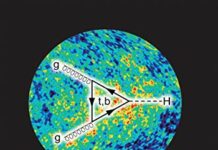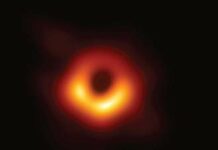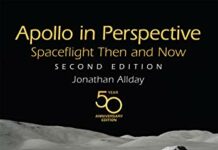
Ebook Info
- Published: 2009
- Number of pages: 590 pages
- Format: PDF
- File Size: 3.90 MB
- Authors: Jonathan Allday
Description
Probably the most successful scientific theory ever created, quantum theory has profoundly changed our view of the world and extended the limits of our knowledge, impacting both the theoretical interpretation of a tremendous range of phenomena and the practical development of a host of technological breakthroughs. Yet for all its success, quantum theory remains utterly baffling. Quantum Reality: Theory and Philosophy cuts through much of the confusion to provide readers with an exploration of quantum theory that is as authoritatively comprehensive as it is intriguingly comprehensible. Requiring no more than school level physics and mathematics background, this volume requires only an interest in understanding how quantum theory came to be and the myriad ways it both explains how our universe functions and extends the reach of human knowledge.Written by well-known physics author and teacher Dr. Jonathan Allday, this highly engaging work:Presents a thorough grounding in the theoretical machinery of quantum physicsOffers a whistle-stop tour through the early part of the 20th century when the founding fathers of quantum theory forever altered the frontiers of human thought Provides an example-filled interpretation of the theory, its applications, and its pinnacle in quantum field theory (QFT), so crucial in shaping ideas about the nature of realitySeparates fact from speculation regarding quantum physics’ ability to provide a starting point for philosophical queries into ultimate understanding and the limits of science The world beneath the one that we experience with our senses is profoundly mysterious, and while we may never completely unravel that mystery, quantum theory allows us to come closer than ever to understanding where the science leaves off and the mystery begins. Quantum Reality: Theory and Philosophy makes that understanding accessible to anyone possessing a quest for knowledge and a sense of awe.
User’s Reviews
Reviews from Amazon users which were colected at the time this book was published on the website:
⭐Allday’s Quantum Reality is a rare book that offers a serious look at quantum theory for laymen. It presents some of the actual math (without the overwhelming detail of a physics textbook) and also discusses history, (some) applications and a survey of the various interpretations- and it does so in a very readable and clear way. (Note: CRC also has online errata for the book.)The only other books that I know like this are Susskind’s Quantum Mechanics and Quantum Mechanics for Thinkers. The Susskind book is the cheapest of the three and covers more math than Allday but it doesn’t discuss history or interpretations. QMFT covers more math than either Allday or Susskind- but it’s marred by errata and an overly abstract third section (mainly on quantum information) in lieu of the usual discussion of quantum interpretations, which most laymen are looking for instead.
⭐I have a B.A. and a M.S. in physics, and I wish I had had this book when I took my first class in quantum mechanics. I spent much of that class, and the subsequent several years, deeply troubled over whether what I was learning was entirely real in an ontological sense, or merely a useful calculational tool that did not correspond to an underlying reality. An example of that might be the medieval astronomers’ crystal wheels on crystal spheres geocentric model of the universe, which was a decent calculational tool for predicting the motion of the planets then known, but was utterly wrong as a model of reality. Other sciences have a better time of it, ontologically: geologists can sleep easily at night, knowing that their grandest theory, plate tectonics is real. The rocky plates are real. The magma underneath is real, as are the convection currents that carry the plates along. We are convinced that plate tectonics gives us an accurate model of reality. Physicists, however, have a tougher time: there is debate over whether wavefunctions and quantum states are real, or merely useful calculational tools. Entanglement, state collapse, measurement — these are far from trivial questions in quantum mechanics, and trying to wade through the epistemological and ontological morass can give a physics student who contemplates them too deeply without guidance a real existential crisis.The book does a superb job of explaining the essential mechanics of quantum theory without being too overburdened with the mathematics; the author clearly put much thought into just how much math to include, and separated some of the more esoteric mathematical concepts into ‘interludes’ that could be skipped by less mathematical readers without too much loss of understanding.Chapters 1-13 lay out an introduction to the mechanical underpinnings of quantum theory, divorced from historical context so as to illustrate most clearly the concepts. Chapters 14-20 give the historical development of quantum theory, and help a modern reader understand just what a radical revision to physics this new theory represented. Finally, chapters 21-27 detail a few applications, expand on key interpretations of quantum mechanics, and finally, gives an excellent description of quantum field theory.I believe physics students would benefit the most from this book, as a companion text in a first course on quantum mechanics, but anybody who needs to learn QM may find this book helpful to gain better insight.
⭐I have an undergraduate degree in Physics, but thanks to the education system I grew up in, I had developed little understanding, let alone intuition of how matter behaves at atomic level. Though, as Jonathan Allday’s book so clearly explains,I may never develop an intuition of how matter behaves, just because of its inherent counter intuitive nature, I am so glad I stumbled upon his book. I at least understand the strange behavior of matter and the experiments that elucidate the strangeness.It is not easy to explain something in scientific terms when you cant give the reason for why it behaves that way. Jonathan Allday’s book takes on this hard challenge and succeeds. He reminds me of Richard Feynman’s book QED, in that regard.Thank you Mr. Allday for such a great book. I wish I had this book when I went to College decades ago. It would have made my three years of learning worthwhile. I am glad, however, I at least know something about the strangeness of matter now – thanks again!This great book inspired me to create an interactive animation of one of the key experiments that brings out the strangeness of matter at atomic level. Just Google “hoxya double slit” to see my interactive animation. Needless to say, it is just a teaser. You have to buy this great book for the full experience.
⭐This is an excellent exposition of a notoriously difficult subject. Aimed at a general audience, but not dumbed down, it explains the experimental basis of quantum theory, provides enough of the math to get a sense of how the theory works, and presents a nice tour of the various interpretations of QM, as well as an explanation of why an interpretation is needed. My only quibble is that Allday ignores Huw Price’s “Retrocausation” interpretation. I will be teaching a course in Philosophy of Quantum Mechanics at UCSB this Winter Quarter, and plan to use this book as a text.
Keywords
Free Download Quantum Reality: Theory and Philosophy 1st Edition in PDF format
Quantum Reality: Theory and Philosophy 1st Edition PDF Free Download
Download Quantum Reality: Theory and Philosophy 1st Edition 2009 PDF Free
Quantum Reality: Theory and Philosophy 1st Edition 2009 PDF Free Download
Download Quantum Reality: Theory and Philosophy 1st Edition PDF
Free Download Ebook Quantum Reality: Theory and Philosophy 1st Edition


